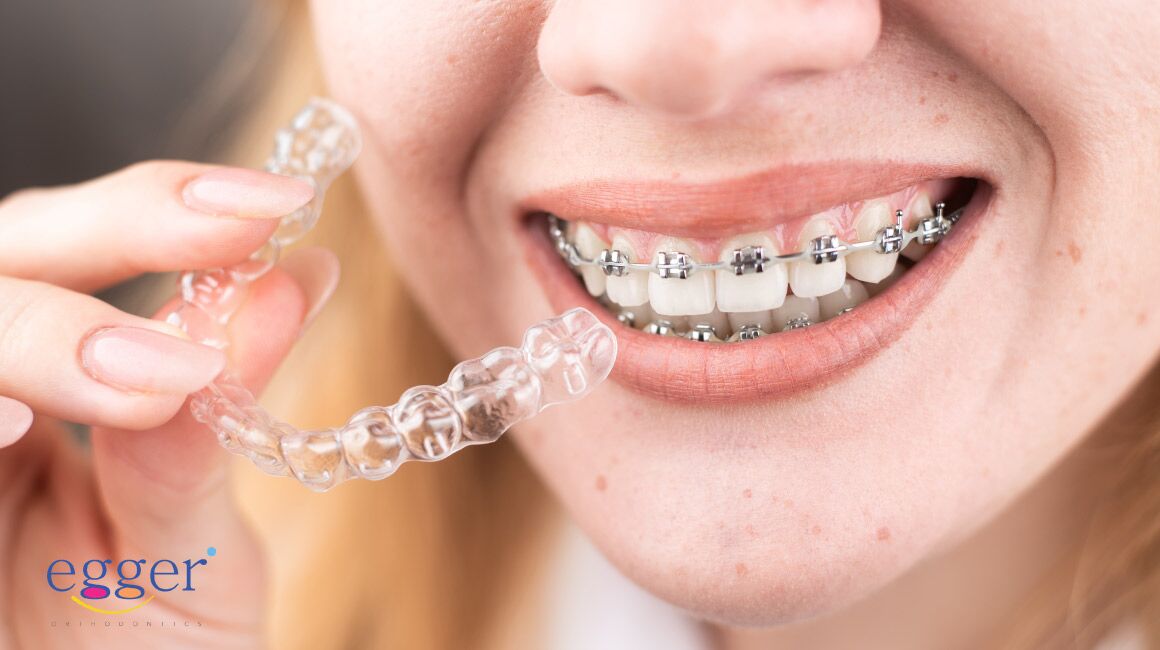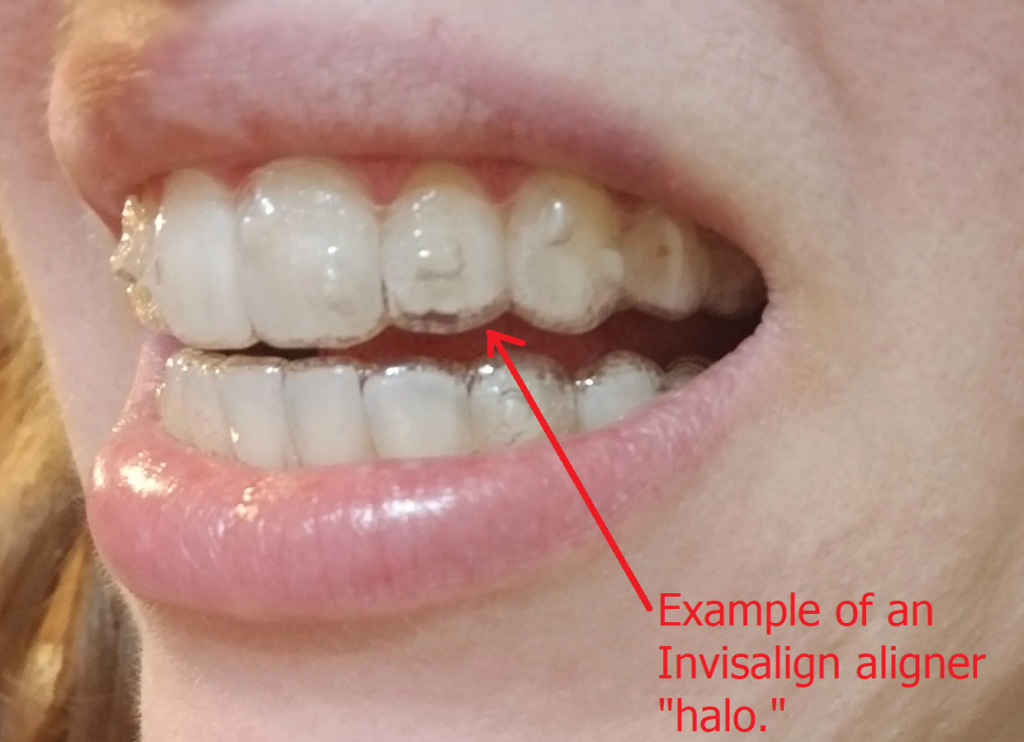Invisalign for Teenagers: A Modern Solution to Straightening Young Smiles
Invisalign for Teenagers: A Modern Solution to Straightening Young Smiles
Blog Article
Invisalign vs. Typical Braces: Which Choice Is Right for You?
When considering orthodontic therapy, the option between Invisalign and traditional braces provides numerous crucial elements that warrant careful analysis. Invisalign provides a discreet choice with removable aligners, while typical braces supply an extra noticeable yet reliable option for serious imbalance. Each option encompasses distinctive advantages and drawbacks associated with aesthetic appeals, convenience, therapy duration, and price. Recognizing these subtleties is crucial for making an educated decision that lines up with your individual preferences and way of living. The inquiry continues to be: which alternative will ideal meet your orthodontic requirements and expectations?
Overview of Treatment Options

In comparison, standard dental braces are composed of metal braces and cords that are bonded to the teeth. This technique uses constant pressure in time to attain alignment. While efficient for intricate orthodontic issues, traditional braces require routine sees for changes and can position challenges in preserving dental hygiene due to the trouble of cleaning around cords and braces.
Both alternatives have their values, and the choice often depends upon specific dental problems, lifestyle preferences, and client compliance. Inevitably, getting in touch with an orthodontic expert is essential for identifying the most appropriate treatment plan customized to individual needs. Comprehending the nuances of each choice can dramatically influence the general success of orthodontic therapy.
Visual Considerations
A considerable element influencing the selection between Invisalign and standard braces is the aesthetic charm each treatment supplies. Invisalign aligners are crafted from clear plastic, making them virtually unseen when worn. This discreet appearance is especially attracting adults and young adults that may feel uncomfortable regarding their orthodontic therapy. The capability to maintain an all-natural smile throughout the placement process can dramatically enhance the patient's self-confidence in social and professional settings.
In comparison, standard braces include steel brackets and wires, which can be much more noticeable. While innovations in orthodontic modern technology have brought about the advancement of smaller sized braces and tinted elastics, traditional dental braces still preserve a more conspicuous account. For some individuals, the exposure of braces may hinder them from looking for necessary treatment.
Inevitably, the option in between Invisalign and typical braces might rest on individual choices relating to visual appeals. Individuals that focus on discretion typically favor Invisalign, while those that are much less concerned about exposure may decide for conventional braces. Recognizing the visual effects of each option is crucial for making a notified decision that straightens with one's lifestyle and choices.
Convenience and Convenience

In terms of benefit, Invisalign aligners are removable, enabling clients to enjoy their favorite foods without restriction and preserve optimal oral hygiene. Cleaning and flossing are simplified, as the aligners can be gotten throughout these routines, whereas typical dental braces need mindful navigating around wires and braces.
In contrast, standard braces require routine changes, making them much less hassle-free for those with active schedules. Generally, the comfort and comfort of Invisalign make it an enticing choice for many people seeking orthodontic therapy.
Treatment Duration and Performance
While both Invisalign and traditional dental braces are efficient in his response remedying dental misalignments, the duration of therapy can differ considerably between both options. Commonly, Invisalign therapy can take anywhere from 12 to 18 months, relying on the intricacy of the case. The clear aligners work by gradually shifting teeth into their preferred positions, and routine follow-ups with an orthodontist help make sure progression stays on course.
In comparison, standard dental braces frequently need a longer commitment, typically varying from 18 months to three years. This results from their set nature and making use of cables and braces, which can be extra reliable for intricate situations and serious imbalances (Invisalign). The therapy performance of typical braces is well-documented, as they enable specific adjustments and better control over tooth movement
Eventually, the option between Invisalign and standard dental braces may depend upon both the anticipated treatment period and the specific dental concerns handy. Consulting with an orthodontist is vital, as they can provide customized referrals based upon specific requirements, making sure the picked approach straightens with preferred outcomes and timeframes.
Price Comparison and Insurance Options
Cost plays a considerable role in the decision-making process for people considering orthodontic therapy, whether selecting Invisalign or typical dental braces. Usually, the cost of Invisalign arrays from $3,000 to $8,000, while typical braces normally set you back between $2,000 and $6,000. Factors affecting these prices consist of the complexity of the instance, the period of therapy, and geographical location.
Insurance policy insurance coverage can significantly influence out-of-pocket expenditures. Numerous oral insurance policy plans offer partial protection for orthodontic therapies, however the specifics can vary widely. It is vital for individuals to evaluate their insurance plan to figure out the extent of coverage for either option. Generally, traditional braces might be a lot more regularly covered by insurance policy plans contrasted to Invisalign, which some insurance companies categorize as an aesthetic procedure.
Additionally, several orthodontic practices use flexible layaway plan, making both treatment choices much more available. People need to make inquiries concerning possible financing options and price cuts for upfront repayments. Assessing the total expense, including insurance advantages and repayment plans, is essential for making a notified decision that lines up with both visual choices and budget considerations.

Final Thought
In summary, the option in between Invisalign and conventional braces hinges on several factors, navigate to these guys including visual preferences, convenience, therapy period, and cost. Invisalign supplies a very discreet, removable alternative that facilitates oral health and dietary flexibility, while typical braces might be better for complex dental problems and often come with a reduced rate factor. Eventually, consultation with an orthodontist is vital to evaluate specific scenarios and identify the most appropriate treatment option for accomplishing optimum dental positioning.
When taking into consideration orthodontic therapy, the option in between Invisalign and traditional dental braces presents several important elements that warrant mindful examination.Contrasting Invisalign and standard dental braces discloses unique treatment choices for orthodontic adjustment.While both Invisalign and standard dental braces are effective in fixing oral imbalances, the period of therapy can differ significantly between the 2 alternatives.Expense plays a substantial function in wikipedia reference the decision-making procedure for people taking into consideration orthodontic therapy, whether opting for Invisalign or standard dental braces.In summary, the option between Invisalign and conventional dental braces pivots on multiple elements, including aesthetic preferences, comfort, therapy period, and expense.
Report this page